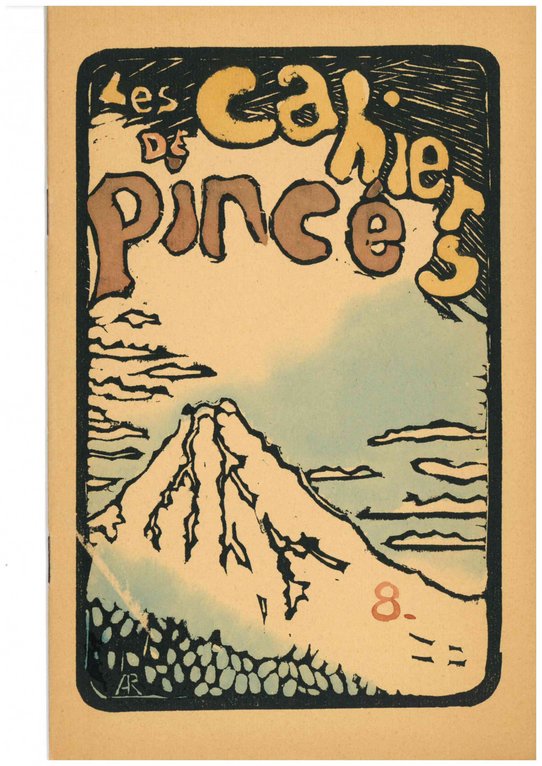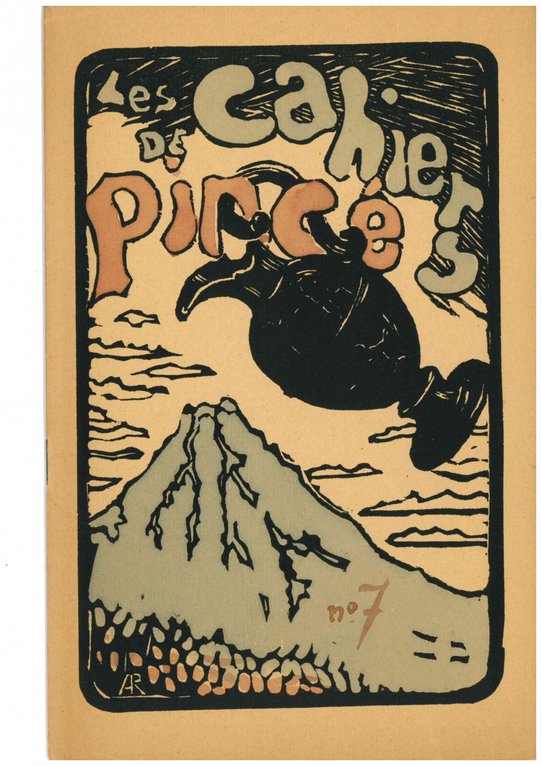
RECOUVREUR Adrien (EN)
Biographical article
Adrien Recouvreur was born on January 27, 1858 in Commercy (Meuse) to a saddle maker father and a homemaker mother. He grew up in a comfortable environment. His father, Jean-Joseph Recouvreur, was a municipal councillor from 1879 to 1912, an administrator of the Caisse d'Épargne from 1882 to 1903, and director of the bank on an honorary basis. He was also part of the administrative commission of the charitable office of Commercy from 1885 to 1905. The Recouvreurs owned meadows and land around Commercy, which they had inherited from the father of Recouvreur's mother, Thérèse Victorine Esselin (AM Commercy, 2Z15).
Adrien Recouvreur was a student at the college of Commercy where he took drawing lessons with Gustave Henry (1838-1902), a painter, engraver, and watercolourist from Lorraine who eventually became his master. He then studied pharmacy in Nancy from November 1882 to October 1885. Alongside his studies, he pursued art lessons taught by Charles-Louis Gratia (1815) and Jules-Antoine Voirin (1833-1898). He developed hydrarthrosis of the knee which forced him to interrupt his studies several times and seemed to have prevented him from performing his military service. His health problems led him to take several cures in Granville (Manche), where he met the orientalist painter Jan-Baptist Huysmans (1826-1906) [AM Commercy, 2Z14]. After obtaining his diploma as a second-class pharmacist in 1885, he set up his pharmacy in Commercy but soon ended his professional activity around 1896 or 1897 to devote himself entirely to art. He also held several administrative positions: member of the inspection and purchasing committee for municipal library books from 1898 to 1905, member of the improvement and oversight commission for drawing classes from 1901-1906, vice president of the college normal alumni association from 1904-1912 and administrator of the Caisse ddisse di de Commercy from 1905-1906. He was also named an officer of the Academy in 1902 (AM Commercy, 2Z15). He married Marie Eugénie Lintz on September 2, 1891, and the couple settled in Commercy (AM Commercy, 2Z15). The wedding was written up in La Lorraine artiste of September 6, 1891, a magazine to which Adrien Recouvreur regularly contributed.
He never liked the profession of pharmacist, but his knowledge of chemistry allowed him to make himself known in artistic circles thanks to several works which brought new knowledge to the field of art, in particular on the harmfulness of paint bitumen. Alongside his books, he wrote numerous articles for artistic reviews and monographs about artists from the region. He was involved in many local artistic circles and was a member of l'Alliance provinciale des industries d'art, which is better known as l'École de Nancy, de la Société Lorraine des Amis des Arts et de la Société Lorraine d’Archéologie. Recouvreur left Commercy in Decmber of 1906 to move to Angers for health reasons. He quickly became integrated in the artistic circles of Angers: from 1909, he was a member of la Société des Amis des Arts d’Angers, then the secretary of this society from 1910 to 1911, then the president from 1912 to 1920 and finally the president of honor beginning in 1924. He was close to a number of artists from Lorraine and Angers. Besides Gustave Henry and Jan-Baptist Huysmans, he was friends with Charles de Meixmoron de Dombasles (1839-1912), Victor Prouvé (1858-1943), Émile Friant (1863-1932), Charles Tranchand (1884-1955) and Georges Gobo (1876-1958). His artistic career never reached the same success despite his regular participation in expositions in artistic salons in Nancy and Angers as well as advice from his artist friends. His work as an engraver did, however, receive some recognition (AM Commercy, 2Z16).
Upon his death on March 18, 1944 he bequeathed his collections to Commercy and Angers.

Domaine public / CC BY-SA 3.0

Domaine public / CC BY-SA 3.0
The collection
The inventory of the bequest made by Adrien Recouvreur to the city of Commercy in 1944 makes it possible to identify most of the works that he had in his possession (AM Commercy, 2Z14).
The inventory includes paintings, drawings and engravings. The dimensions and authors are usually indicated:
Paintings
37 Paintings, including many by painters from Lorraine.
Léon Barotte (1866-1933), Paul Bonnaud (1873-1953), François Boucher (1703-1770), Georges Caïn (1856-1919), Pierre-Nicolas Euler (1846-1915), Émile Friant (1863-1932), Paul-Eugène Goepfert (1849-?), d(1815-1911), Louis Hestaux (1858-1919), Jules Lenepveu (1819-1898), Fernand Lutscher (1843-1923), Louis-Ferdinand Malespina (1874-1949), Charles de Meixmoron de Dombasle (1839-1912), Émile Mesnager (xixe-xxe), Charles Seureau (xixe-xxe), Jean-Matthias Schiff (1884-1919), Ernest Wittman (1846-1921) et Charles Wittman (1876-1953).
Adrien Recouvreur also bequeathed fourteen of his own paintings and three by Victor Fagnani (uncle of his wife).
Drawings
More than fifteen drawings are inventoried, but certain attributions should be be reconsidered. Among the artists mentioned, we find François Boucher (1703-1770), Gaston Bussière (1862-1928), Eugène Delacroix (1798-1863), Édouard-Henri Baudot (1871-1953), Angelica Kauffmann (1741-1807), Nicolas Lancret (1690-1743), Charles Le Brun (1619-1690), Nicolas Poussin (1594-1665), Ligier Richier (1500-1567), Pierre Paul Rubens (1577-1640), François-Ferdinand Sausse (1815-?), Antoine van Dyck (1599-1641), Jules-Antoine Voirin (1833-1897) and Léon-Joseph Voirin (1833-1887). Several drawings and sketches by his master and friend Gustave Henry (1838-1902) are also in the bequest. Adrien Recouvreur also donated several of his etchings.
Prints and Stencils
Adrien Recouvreur donated a collection of Japanese prints as well as several framed prints whose mode of acquisition remains unknown.
However, in a letter to his friend and master Gustave Henry (1838-1902), which Recouvreur wrote on his return from the Exposition Universelle in Paris in 1889, he stated,: "I gleaned some Japanese things and old carpets from display cases and carried an armload of it in the train" (AM 2Z14). Elsewhere, he cites the Goncourt brothers for their role in promoting Japonisme in France, although there is no indication that they were in contact: "Today we can hardly avoid the necessity of opening a Japanese section in all our French museums; that country’s art has contributed so much to the current revolution in our painting. In small meetings held each week on Wednesdays at the Goncourts, artists shared the plum pudding and leafed through boxes stuffed with Japanese prints generally unknown elsewhere" (AM Commercy, 2Z).
Among the Japanese books bequeathed to the city of Commercy were:
−Five anonymous works, including one from 1864 according to the censor's stamp.
−Two of the three volumes of Gafu by Katsushika Hokusai (1760-1849), originally published in 1849.
−Three prints by Hiroshige Utagawa (1797-1858).
−Two volumes of Kacho gafu by Watanabe Seitei (1851-1918), originally published in 1903.
−A work by Morikuni Tachibana (1679-1748).
−A work (Famous Men?) by Totoya Hokkei (1780-1850).
Adrien Recouvreur seems to have studied Asian art with interest. In the note previously mentioned, he wrote: "Not to be confused with Chinese art, which is more common, of a very imprecise design and less realistic, puffed up, with no anatomical shape. Chinese art predominates elsewhere, in ceramics for example. Note: the Japanese School that influenced our modern art includes only one century - from the mid-18th to the mid-19th century - (by the colour print) - decadence came quickly, victim of the introduction of our perspective.” He especially wrote aboutJapanese art in Cahiers de Pincé no. 8 where he described "the Japanese print, this great work of an artistic people so disciplined that one may rightly say that they are the exceptions in the modern world” (Cahier de Pincé, 1930, p. 1).
The covers of Cahiers de Pincé no. 7 and no. 8 depict Mount Fuji in the style of Japanese prints (AM Commercy, 2Z9). The influence of Japan on Adrien Recouvreur can also be seen in one of the engravings he produced during the First World War, Le Droit de la force (Musée de Commercy, MC 2016.0.31), which is identical to a print by Hokusai representing the yokai Tsuchigumo. Recouvreur also says of him that he is "perhaps the greatest draftsman of all time" (Cahiers de Pincé, 1930, p. 2).
Adrien Recouvreur also donated all of his written work to the City of Commercy (AM Commercy, 2Z9).
The collections he bequeathed to the city of Angers include 37 Asian objects in metal (bronze, gilt copper, pewter, etc.), ceramics (glazed earthenware, glazed earthenware, porcelain), wood, painted glass, and mother-of-pearl, as well as drawings on paper, paintings on silk, watercolours, even a pair of slippers.
Adrien Recouvreur's objects from Asia in the Angers collections range from the 18th to the 19th century and come from Japan and China.
Related articles
Collection / collection d'une personne

Personne / personne

